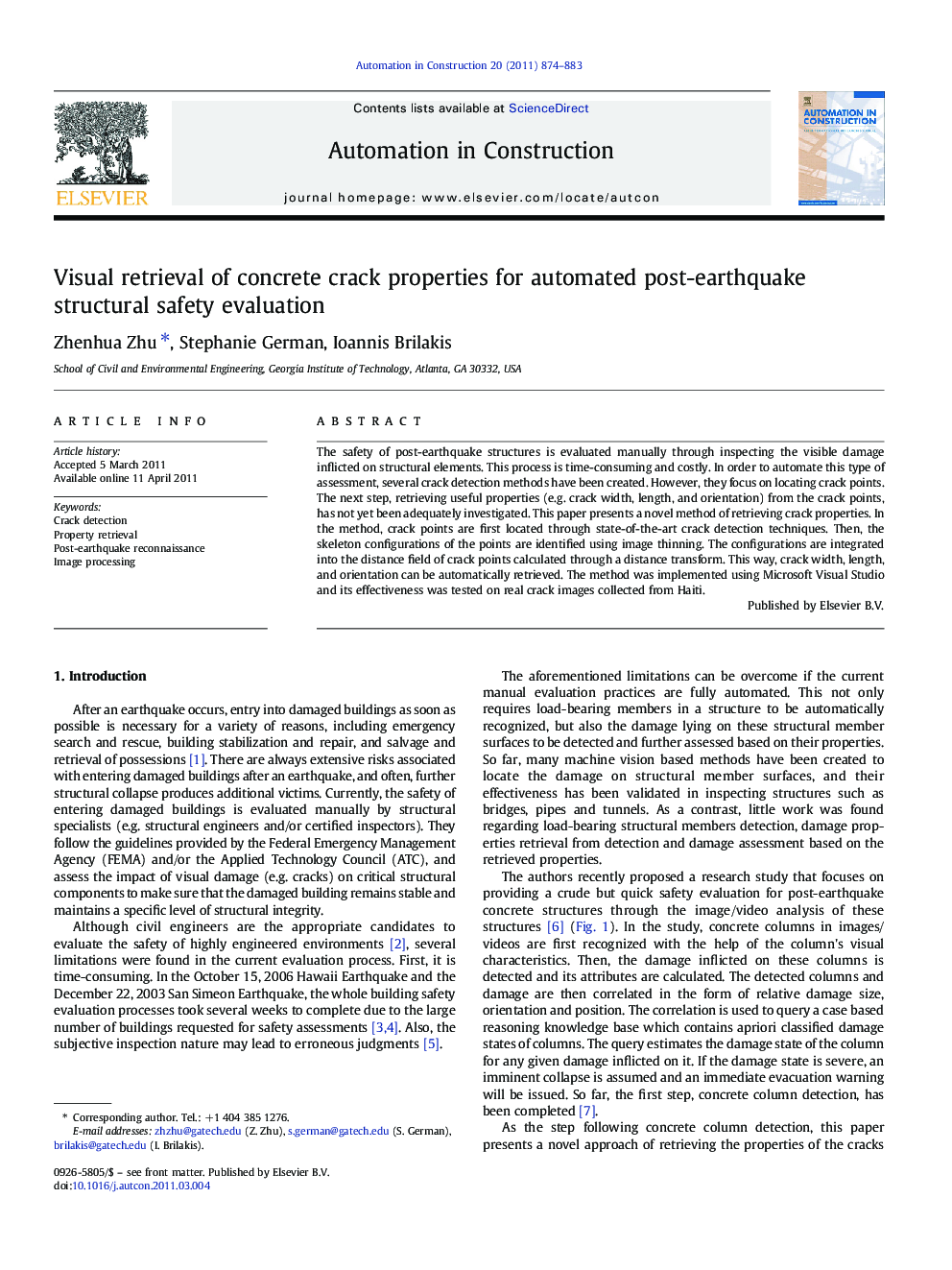| Article ID | Journal | Published Year | Pages | File Type |
|---|---|---|---|---|
| 247057 | Automation in Construction | 2011 | 10 Pages |
The safety of post-earthquake structures is evaluated manually through inspecting the visible damage inflicted on structural elements. This process is time-consuming and costly. In order to automate this type of assessment, several crack detection methods have been created. However, they focus on locating crack points. The next step, retrieving useful properties (e.g. crack width, length, and orientation) from the crack points, has not yet been adequately investigated. This paper presents a novel method of retrieving crack properties. In the method, crack points are first located through state-of-the-art crack detection techniques. Then, the skeleton configurations of the points are identified using image thinning. The configurations are integrated into the distance field of crack points calculated through a distance transform. This way, crack width, length, and orientation can be automatically retrieved. The method was implemented using Microsoft Visual Studio and its effectiveness was tested on real crack images collected from Haiti.
